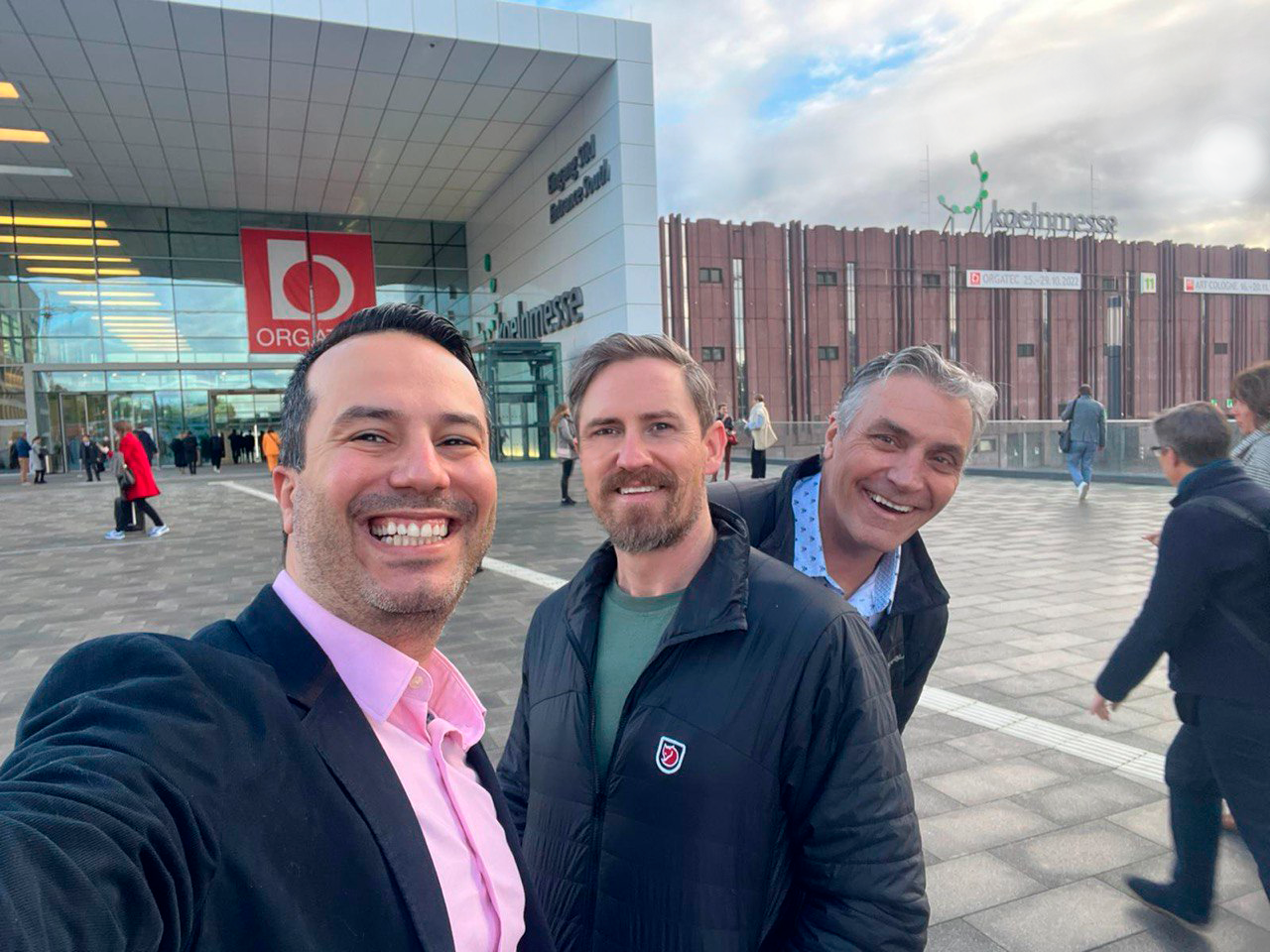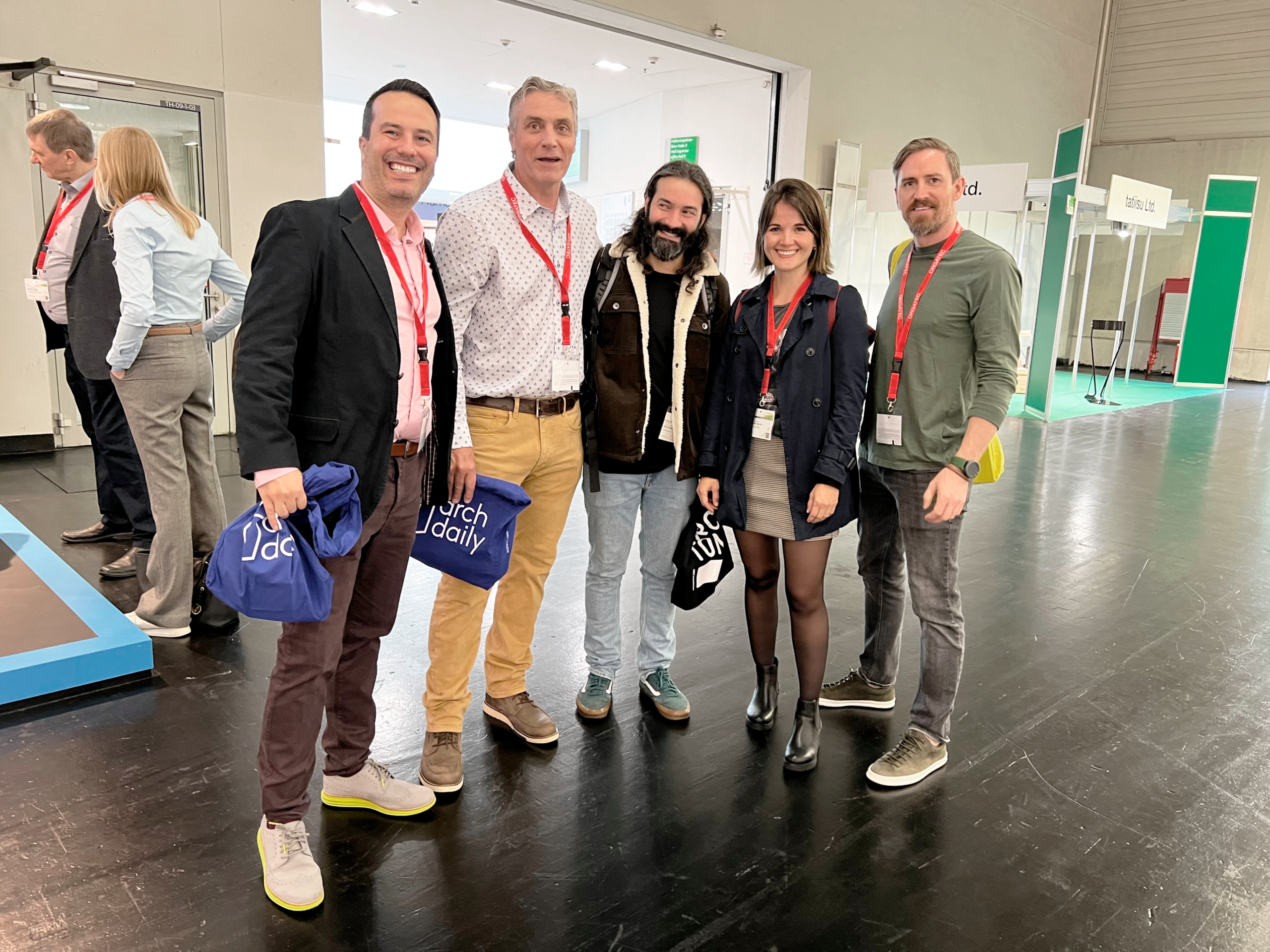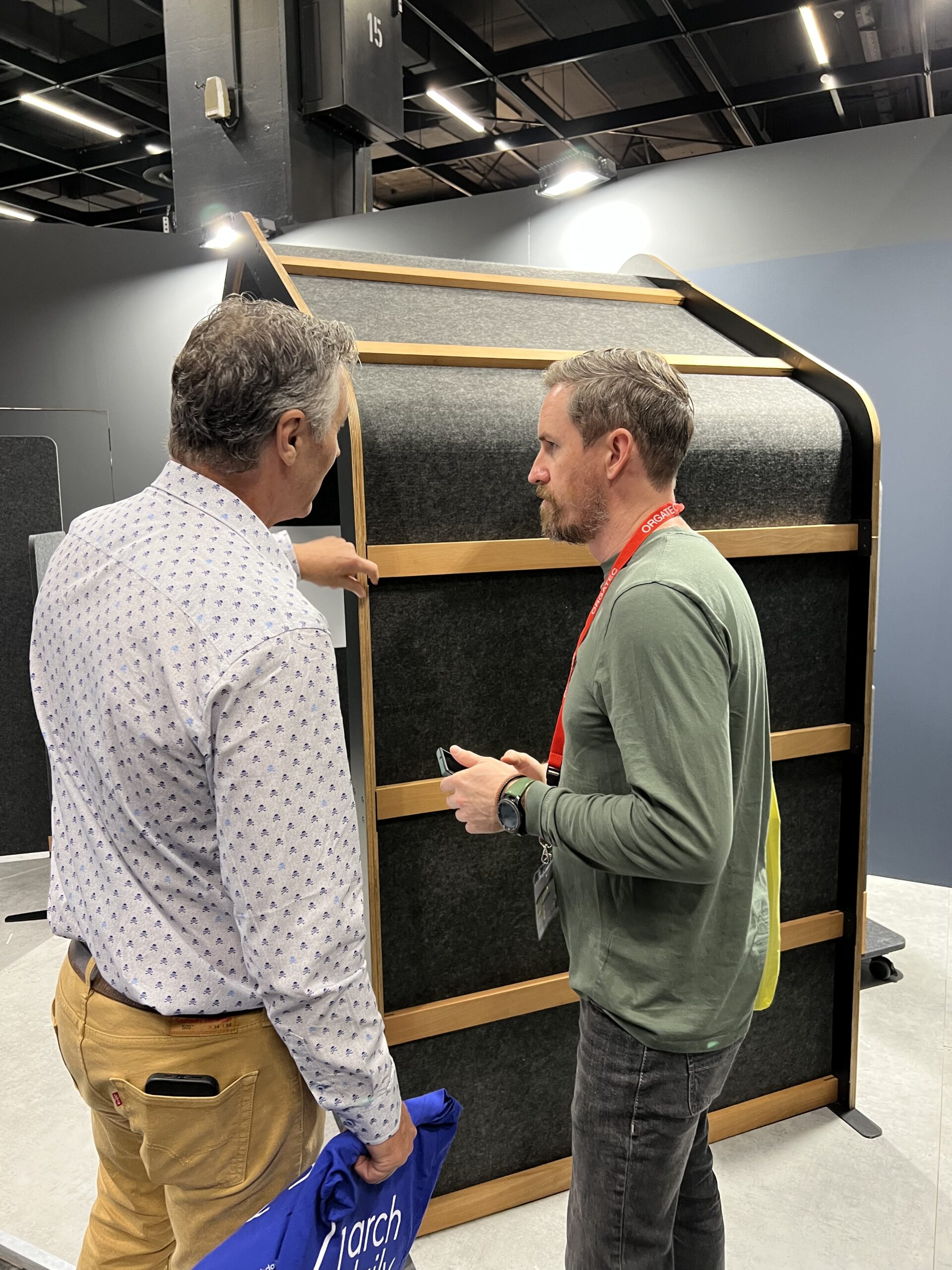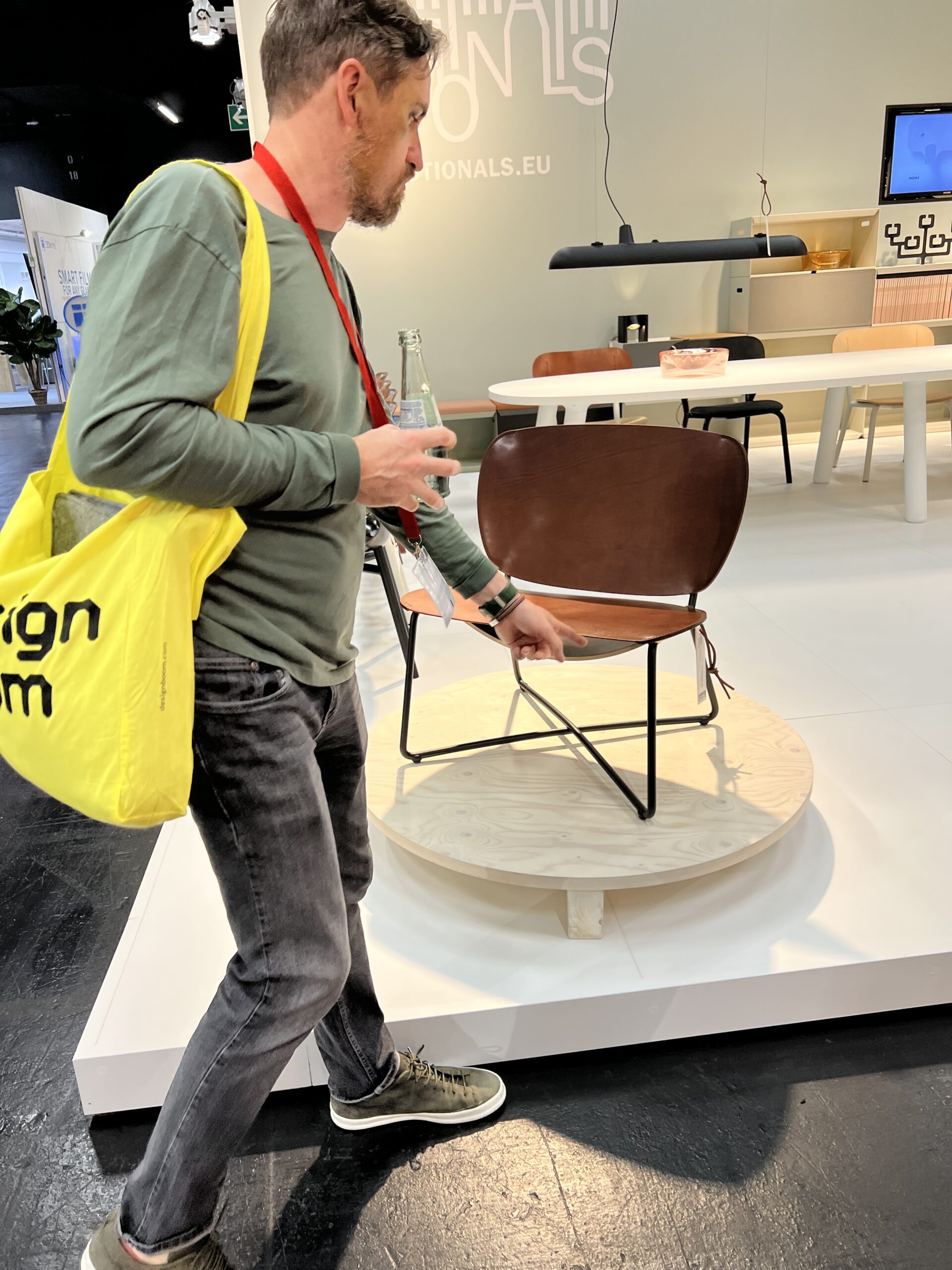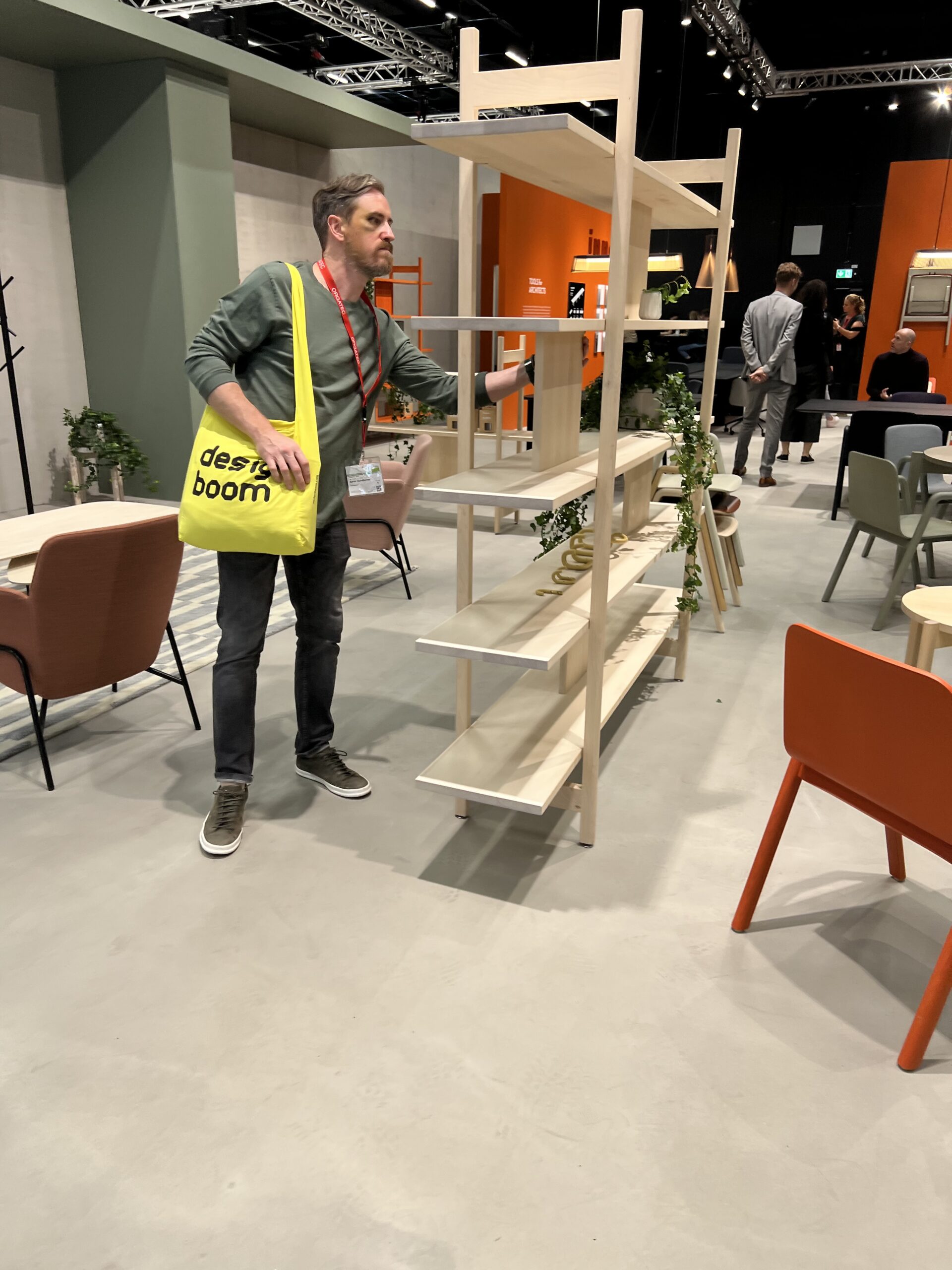The Orgatec Furniture Tradeshow Returns to Cologne after a long Absence due to the Covid Pandemic
Now that the major furniture trade shows have reconvened after the height of the Covid pandemic, it feels good to get on the road and see some of the latest industry developments in person.
Our first stop, of course, was our Formaspace Contract showroom at NeoCon in Chicago back in June.
While NeoCon is the largest furniture show in America, the world’s largest (by attendance numbers) is the Orgatec tradeshow in Cologne – so we flew to Germany to uncover the latest European design trends in the office furnishings industry.
Orgatec is normally held biennially, but it marked its first return after several years of absence due to Covid.
Making the trip this time were Aaron Stoneburner (Industrial Design and Engineering Manager), Brett Gray (Product Manager and Industrial Team Lead), Mehmet Atosoglu (Formaspace Director of Marketing), and team members Alejandra Garcia and Simon Gonzalez.
After such a long hiatus, it felt good to see our European colleagues face-to-face, as well as to see and touch the furnishing displays in real life – and not via a Zoom call.
MCM Styles with Soft, Desaturated Palettes and Natural Wood Finishes Dominated the Showrooms at Orgatec 2022
There were nearly 700 exhibitors at Orgatec 2022, with an estimated 45,000 visitors from 130 countries.
So, what were the major design trends at the show?
One thing that struck us right away from a shift away from shiny surfaces. Brass, gold, and mirrored finishes that once dominated everything – from light fixtures to accent bezels to support frames – have been replaced with matte finishes.
The color palette was much more subdued as well:
- Exposed frame elements were predominantly finished in gray tones, from light gray, through charcoal, to nearly black. White frames made an occasional appearance.
- Gray fabrics also predominated, with many sound-deadening panels, room dividers, and seating elements covered in a felt-like medium gray fabric.
- Among the non-gray fabrics, desaturated, complementary tones, such as orange or green, were favored over the use of strong primary colors.
Natural (or fake) wood tones surfaces were in great abundance, especially plywood. In some cases, we saw bent plywood. Unlike past years, bold accent patterns were generally absent.
Repeated use of wood strips (or slats) mounted on a black background to create a reveal pattern also found favor among many of the exhibitors.
Collectively speaking, what can we say about the style direction based on these individual elements?
At a high level, we sensed a strong retro revival harkening back to the Bauhaus-influenced International Style of the late 1940s to the mid-1950s.
Many of the furnishings on display would look very much at home in the Mid Century Modern homes and office buildings designed by the MCM master architects Craig Ellwood, Pierre Koenig, and Mies van der Rohe.
But then we began to realize that quite a few pieces on display were unmistakably direct descendants of some of the great furniture designs of that period as well.
For example, the curvaceous free-form upholstered chairs reminded us of Finn Juhl’s 1940 Pelican Chair of 1940 or Arne Jacobsen’s Swan Chair of 1958, while the many hard seating designs on display were liberally inspired by the Ray and Charles Eames Lounge Chair Wood (LCW) or Arne Jacobsen’s stackable Model 3107 Chair dating back to 1955.
The desking and storage systems on display at Orgatec didn’t stray far from the rectilinear designs of the past either, including George Nelson’s Desk Nr 4658 of 1946, Ray and Charles Eames Storage Unit of the early 1950s, or Finn Juhl’s mobile glove cabinets mounted on casters.
European Furniture Industry Facing Economic Challenges due to Supply Chain Issues, Inflation, and Energy Shortages Affecting Manufacturing
Moving beyond the question of style influences, we were also trying to understand some of the underlying economic challenges facing furniture manufacturers in Europe.
Worryingly, some of the largest furniture makers (including all the American majors) were absent from the show floor. Perhaps they wanted to see whether Orgatec would generate the same level of foot traffic as it did before the pandemic. The show was well attended, so hopefully, they will come back in 2024.
But there may be spending concerns as well. One bad piece of news: the UK’s design-oriented brand “MADE” went into receivership during this timeframe.
Also concerning: Inflation is much higher in Europe than in the US as well (The Netherlands hit 17% inflation this year). An energy crisis also looms large over European heavy industries, especially for steel and metal foundries and fabricators, which could force them to cut production, either due to prohibitive energy prices or gas shortages caused by the Russian invasion of Ukraine. Added to this list of woes is the turmoil of ongoing supply chain shortages.
All in all, the economic situation in the US at the moment is far less cloudy than in Europe, for which we ought to be thankful.
European Focus on Sustainability influences Furniture Design and Distribution Practices
Problems due to potential energy shortages, higher costs, and supply chain shortages may be one reason for the widespread use of plywood materials at the expense of metals or other costly materials at Orgatec.
Sustainability may be another reason.
The European Union and European businesses are focused on sustainability to the degree that we aren’t here at home in the USA – at least not yet.
To this plywood trend, we can also add another – modular designs that can be shipped in a flatpack to the distributor or customer, which saves significant costs on shipping.
(To our credit, flat pack shipping has long been a practice at Formaspace for our own lines of modular furniture.)
Smart Office Technology Moves into Mainstream Adoption
Another trend that we were very curious about started several years ago – before the onset of the pandemic.
We’re talking about varying degrees of so-called “Smart Office Technology” – an umbrella term that spans the gamut from controlling sit-to-stand furniture with an app to full-blown corporate personnel management systems where employees check in via an app and are assigned a specific desk for the day.
Based on what we saw at Orgatec, the technology has matured significantly in the last 3-plus years, and it appears ready for prime time, making it a potentially useful addition for hybrid work environments.
During our time in Germany, we were also invited to visit the production facilities of one of Formaspace’s strategic partners, Kesseböhmer Ergonomietechnik, who markets their line of ergonomic Smart Office solutions through their YOYO brand.
Clever, Flexible Furniture Designs on Display at Orgatec
Sit-to-stand desks were not the only flexible furniture solutions on display this year at Orgatec.
We were very intrigued by the sheer number of clever designs that seek to solve different problems.
These solutions ranged from flip-top mechanisms to pop-up dividers to mobile space dividers.
Also making an appearance on the show floor was a variety of so-called phone call booths that allow workers to jump into when having a private telephone conversation – which can help limit distracting noise in an open office environment.
A related category, the collaboration pod, was also popular at the show. These are a form of huddle rooms, but mostly took the form of triangular, open-ended “pup tent” roof structures (made of lightweight soft padded materials or stretched canvas-like fabrics) mounted over picnic tables or other face-to-face seating arrangements.
Looking Ahead to NeoCon 2023
As we approach the start of 2023, now is the time to start planning your calendar.
Orgatec won’t return until 2024, but we look forward to seeing you in Chicago at our Formaspace Contract Showroom at NeoCon 2023 on June 12 – 14, 2023.
In the meantime, now is the perfect time to make contact with your Formaspace Contract Representative. Find your rep today using our handy map.


